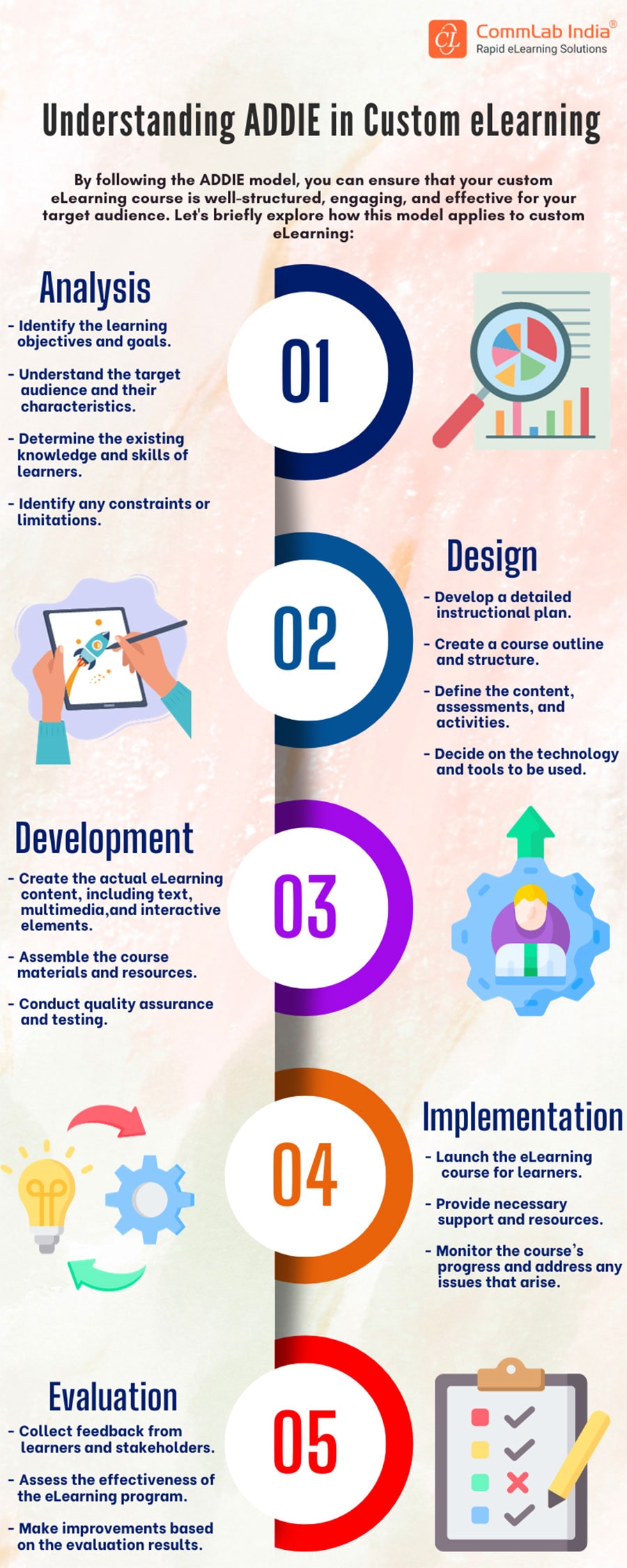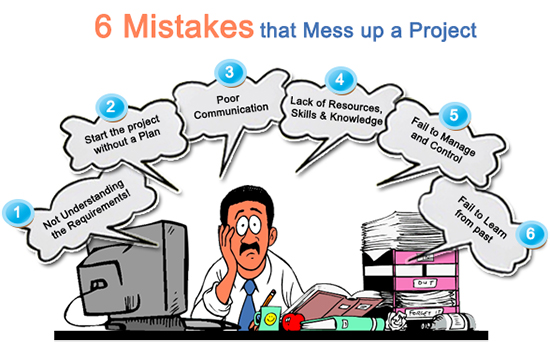Understanding ADDIE in Custom eLearning [Infographic]
Well-structured, engaging, and effective training courses are a must for successful results. ADDIE in custom eLearning can help. Read on to find out how.

From diet to workout plans, we have customization options everywhere. Have you ever wondered why? The answer is pretty simple. The customized plan works best because it is curated keeping the individual in mind. Then why provide your learners with generic, off-the-shelf training courses? Instead, you should focus on custom eLearning that caters to the specific needs and goals of each learner, thereby promoting better and more effective learning experiences.
→ Download Now: Instructional Design Strategies for Engaging eLearning Courses
Custom eLearning not only makes the learning process more engaging and effective but also helps individuals achieve their desired outcomes faster and more efficiently. So, why settle for a one-size-fits-all solution when you can provide tailored training that truly makes a difference?
In this blog, we will explore the top 3 advantages of custom eLearning in corporate training and then try to understand the use of the ADDIE model in custom eLearning. Let’s start!
Top 3 Advantages of Custom eLearning in Corporate Training
Improves Learner Engagement
Custom eLearning goes beyond traditional training methods to foster learner engagement. It incorporates interactive elements and multimedia components, such as simulations, quizzes, videos, gamified scenarios, etc., that captivate learners' attention. The improved engagement levels not only keep learners motivated but also enhance knowledge retention.
This is because active participation fosters a deeper understanding of the training material. By making the learning experience more enjoyable and interactive, custom eLearning ensures that learners are not merely passive recipients of the information but active participants throughout the training program.
Enables Personalization
When traditional one-size-fits-all training programs fall short of meeting the diverse needs of employees within an organization, custom eLearning holds the center. Its ability to offer personalized learning experiences to learners is one of the key advantages. It tailors the learning materials to the specific requirements of the organization and individual learners, thereby boosting impact and efficiency.
This personalization includes multiple factors such as job roles, skill levels, educational background, and learning preferences. By aligning the content with the unique characteristics of the workforce, custom eLearning ensures that training is not only relevant but directly applicable to each learner's role.
Ensures Consistency in Information
Maintaining a level of consistency in information and brand identity across the organization is a critical aspect of successful training. Custom eLearning excels in this regard as it focuses on providing a standardized learning experience to all employees. Whereas off-the-shelf training programs lack this consistency, leading to a fragmented learning experience.
Consistency in custom eLearning is achieved through different ways like uniform delivery of content, eLearning assessments, and content tailored according to the organization's unique culture and objectives. Custom eLearning ensures that employees receive a unified and aligned learning experience. It helps reinforce and uphold the organization's values, standards, and objectives throughout the training journey and thereafter.
Understanding ADDIE in Custom eLearning
Wrapping It Up!
By combining custom eLearning and the structured approach of the ADDIE model, you can ensure effective and engaging learning experience for your learners. This is particularly helpful when to comes to training modern, multi-generational workplaces. Another thing that’s helpful when it comes eLearning design is the instructional design strategies. They ensure your courses are learner-centric, balanced, and drive organization toward success. We’ve got you covered for that too! Given below is an eBook for the same.







